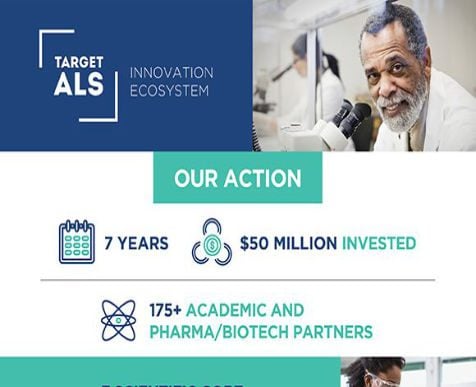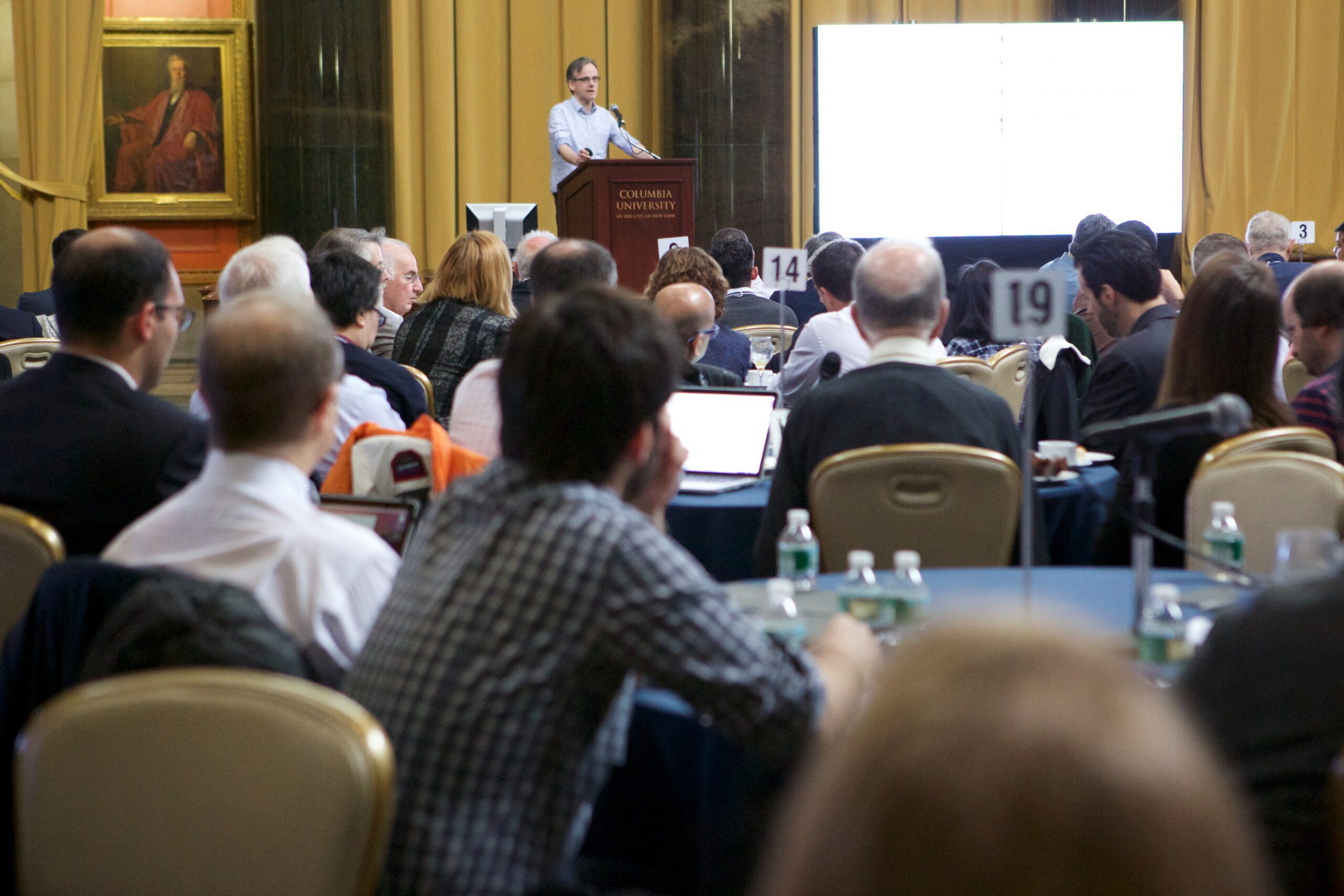It is a sobering thought how prevalent ALS cases are worldwide, but equivalently, there are brilliant ALS researchers leading projects around the globe to combat it. To help facilitate collaboration and provide scientists with the critical resources they need to complete their studies, Target ALS’ cutting-edge core facilities are available to serve that function – designed and based on direct feedback.
Fighting ALS in Italy
Since 2013, Dr. Emanuele Buratti 1 has worked at the International Center for Genetic Engineering and Biotechnology (ICGEB). He is currently the Group Leader for the Molecular Pathology Laboratory and conducts research advanced through a partnership with Target ALS.
His research has primarily concentrated on studying the role that TDP-43 (a protein involved in processing mRNA molecules) plays in ALS pathology. His team’s studies focused on ALS progression rate, disease duration, and cognitive status and resulted in the determination of TDP-43 as a pathological burden. A pathological burden is essentially a level of intensity or severity of a disease and its possible impact on daily life.
Since its discovery as a primary component of ALS in the tissue of patients who passed away, TDP-43 has remained a central focus in understanding the disease.
Using Target ALS Core Facilities for TDP-43 Research
For Dr. Buratti’s latest projects on TDP-43 ALS research, his team obtained critical transcriptomic data deposited with the New York Genome Center (NYGC) as part of a partnership with Target ALS’ Postmortem Tissue Core. Core facilities are centralized resources that provide researchers access to databases, software, or professional expertise in research collaboration. Target ALS’ Postmortem Tissue Core is a unique resource that provides high-quality postmortem tissue for research and academic researchers globally.
Though both NYGC and Target ALS are not physically near the research being conducted by Dr. Buratti, he emphasizes the importance of the resources provided by Target ALS.
“Our lab is based in Italy at the ICGEB and we have great difficulties in accessing clinical postmortem samples from ALS patients,” Dr. Buratti says. “Having access to this kind of data from the Target ALS Postmortem Tissue Core has allowed [our project] to advance and improve our research in ways that would have been quite impossible just a few years ago.”
TDP-43 Research Results So Far
Dr. Buratti has performed several basic studies on the biochemical and functional properties of TDP-43, primarily focusing on investigating the pathophysiological role in ALS. At the Molecular Pathology Lab, Dr. Buratti and his team have recently completed and submitted, two studies for publication.
The initial study involved the characterization of TDP-43 splicing in muscle and brain cells of mice, as well as human cells. The identified behavior of the splicing events was then analyzed using the Target ALS Postmortem Tissue Core database. Through the analysis of these data, the team was able to show that inclusion levels of these alternative exons were differentially affected in patients versus control tissues, thus confirming the initial hypothesis that cell-type and disease conditions can affect TDP-43 functions in a specific manner.
Their second study aimed to identify transcripts co-regulated by TDP-43 and highly conserved hnRNPs 2. In certain ALS cases, both TDP-43 and hnRNP are mutated and often mislocalized within the motor neurons of affected patients. Furthermore, TDP-43 works together with several hnRNPs to regulate correct RNA processing. In the process of conducting this research, the team uncovered a new factor: Nitric Oxide Synthase 1 Adaptor Protein (NOS1AP).
NOSIAP’s mRNA is a direct TDP-43 target. Overall, results demonstrate that NOS1AP may represent a novel disease-relevant gene, potentially suitable for developing new therapeutic strategies.
Overcoming Barriers in ALS Research
Dr. Buratti credits Target ALS for addressing what he believes to be several long-standing problems in the field of ALS research, including the difficulty of many researchers, especially in basic research settings, to gain access to data from patients.
“This is a considerable problem,” Dr. Buratti admits, “because difficult access to samples and data does not allow [researchers] to gain a quick appreciation of how basic research results may be present [or] reflected in patients.”
Having a base for centralized ALS research helps standardize results among different research labs because they will eventually be able to access the same type of starting material. Not only will scientists from around the world have access to the Postmortem Tissue Core, but data from the Longitudinal Biofluids Core.
“The possibility of starting from a readily accessible source of cells, data, and samples will certainly allow a better comparison of results between different labs,” Dr. Buratti says.
Impacting ALS Research Moving Forward
Access to postmortem tissue samples through Target ALS has enabled Dr. Buratti and the ICGEB to foster scientific collaboration with other labs working on the relationship between TDP-43 pathology and RNA processing.
He believes this has begun to do for ALS research what the first encyclopedias aimed to achieve in their time: providing global access to knowledge and tools to make research on this disease take a quantum leap forward
SOURCES:
1. Emanuele Buratti. ICGEB. (2020, July 3). Retrieved April 15, 2022, from https://www.icgeb.org/group-leader-emanuele-buratti/
2. Molecular Pathology. ICGEB. (2020, July 3). Retrieved April 15, 2022, from https://www.icgeb.org/molecular-pathology/







